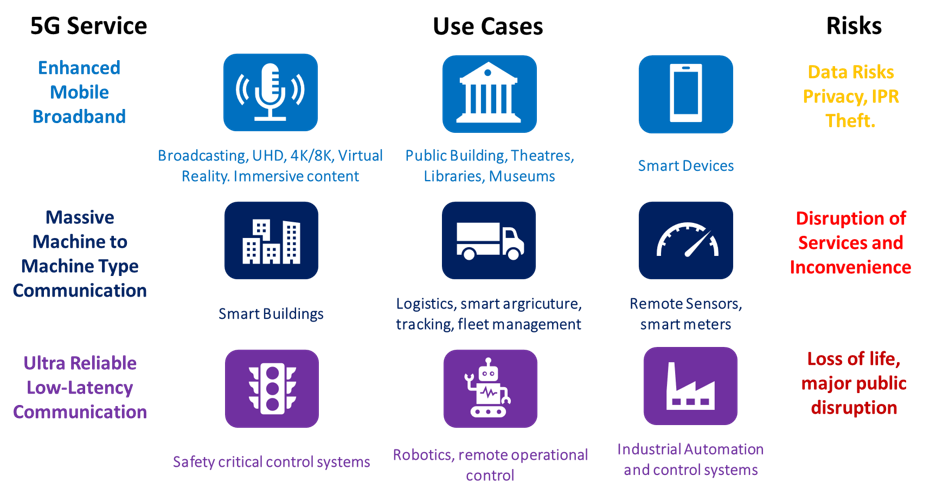1 Executive Summary
The move to 5G mobile communications is intended to support the massive increase in capacity and connectivity that will be required for the future cloud of things and the enhanced bandwidth for new mobile data services.
It is not practical to use wired networks for all the sensors and controls that are needed to enable industry 4.0, smart buildings, autonomous vehicles and smart cities. These need flexible and secure wireless communication to connect large numbers of low powered modules. 5G Massive Machine-Type Communications is designed to support this.
For some use cases, for example in manufacturing robotics and autonomous vehicles, the computing power needed is best provided by cloud services. For this to work effectively the network must provide ultra-reliable and low latency communications. 5G URLLC Ultra-Reliable Low-Latency Communication will provide mission critical uninterrupted data communications.

The current generation of cellular communication 4G LTE provides a “one size fits all” type of service. Using a technology known as “Network Slicing” and a Service Oriented Architecture 5G is able to provide multiple levels of service with guaranteed SLAs using the same wireless infrastructure.
5G also provides enhanced security and privacy within the cellular infrastructure.
5G is now in the early stages of rollout and will provide new opportunities for many industry sectors to provide new services as well as to improve efficiency. To benefit from 5G organizations need to:
- Review how 5G will impact on your business: consider what opportunities that 5G could bring to your industry sector. Industry sectors that are likely to see benefits include logistics, manufacturing, transport, healthcare, the media and local government.
- Consider the risks: while the 5G technologies have been designed with security in mind they nevertheless introduce new risks. You should consider which risks will be important to your organization.
- Conduct a trial: 5G is a new technology and the best way of examining this in depth is to conduct a trial. Identify a user case, look for government funding or support from a network service provider.
- Build end-to-end Security in from the start –The consequences of security failure in many of the potential use cases go way beyond data leakage to include physical harm and large-scale disruption.
- It may replace your WLAN but not yet - It is possible for an organization to set up their own private 5G network. However, the infrastructure needed for this is much more complex that that required by a WLAN. Most organizations will find it more effective to buy a tailored service from an existing cellular network service provider.


















































